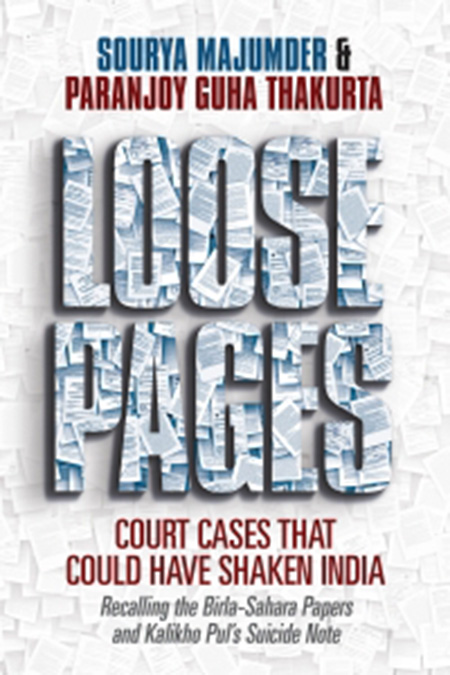The much-quoted sentence, “there are three kinds of lies: lies, damn lies and statistics”, was attributed to the 19th century British Prime Minister Benjamin Disraeli by American author Mark Twain. Although researchers could never find such a statement in any written work of Disraeli, the sentence gained universal popularity to signify how economists and other number-crunchers use the “persuasive power” of figures to make a political point or debunk an argument, even if the contention rests on weak ground.
On January 30, when the ministry of statistics and programme implementation issued a formal note titled New Series Estimates of National Income, Consumption Expenditure, Saving and Capital Formation (Base Year 2011-12), many knowledgeable observers of the Indian economy were shocked out of their wits. The estimate of the growth rate of India’s gross domestic product (GDP) for the financial year that ended on March 31, 2013, jumped from 4.7 per cent to 5.1 per cent, while the GDP growth rate for the following year, 2013-14, rose even higher by nearly two percentage points, from five per cent to 6.9 per cent.
These were not exactly small changes. The monetary value of all goods and services produced within a country over a year is called its national income or GDP and this figure is meant to include all private and public consumption of goods and services, government financial outlays, investments and net foreign trade (exports minus imports). There are various methods of estimating GDP — at “factor cost” or in terms of “gross value added” — but these terms are gobbledegook for ordinary people. Nevertheless, there are quite a few who believe that the GDP figure is an indicator of the economic well-being of a country. Others, however, disagree vehemently — but more of that a bit later. India’s GDP during the just-concluded 2014-15 financial year is Rs 1,26,53,762 crore, according to the “advance estimate” of the Central Statistics Office (CSO).
After the new GDP statistics were released, what embarrassed the government was, that among the people who confessed they were completely flummoxed were those who should have known what exactly was going on. Among them were Reserve Bank of India governor Raghuram Rajan and Arvind Subramanian, chief economic adviser to the government of India in the ministry of finance. Not surprisingly then, the CSO had to face a lot of flak.
More than two months later, the confusion has not cleared. The Economic Survey released by the finance ministry on February 27, a day before the presentation of the Union Budget for 2015-16, stated that the new GDP figures for 2012-13 and 2013-14 were “somewhat puzzling” because savings and investments had declined in this period and imports (that are usually associated with high growth) had fallen sharply. That was indeed an under-statement. Clearly, someone somewhere needs to do some explaining.
One is here reiterating a demand that has already been made by experts. For the sake of its own credibility, if nothing else, the CSO together with the ministry of corporate affairs should make public its full database of companies so that it can be examined by independent researchers to demystify what the puzzle is all about.
The reason why the database on private companies needs to be disclosed is on account of the fact that the change in the GDP estimates is largely a consequence of major discrepancies in two sets of numbers that have been put out by two sub-committees of the CSO. The variations are in the estimates of the “gross value added in manufacturing” by the corporate sector in 2012-13 which has more than doubled, while “savings in the non-financial private corporate sector” went up more than two and a half times.
This has been pointed out by R. Nagaraj, an “independent”, non-official member of the first sub-committee of the CSO, who is a professor at the Indira Gandhi Institute of Development Research, Mumbai, set up by the RBI, in an article published in the Economic & Political Weekly (March 28). The first panel, which looked into the manner in which data relating to the private corporate sector should be incorporated into the GDP figure, submitted its report in September 2014. A second sub-committee of the CSO thereafter changed the methodology of calculation.
Without going into the technical details, the differences in the two sets of statistics stemmed from the kinds of corporate entities that were included. The first official sub-committee used data from around 5,20,000 companies in the MCA database but the second panel used data from nearly 9,00,000 “active” companies that were subsequently extrapolated. The definition of an active company was a corporate entity that had filed details about its annual returns (balance-sheet and profit-and-loss account) at least once over the last three years.
Why is it important for the CSO and the MCA to make all this information public? Many companies in India are registered but not “active” even by the liberal definition used. It is hardly a secret that such firms are called shell companies and these dummy firms are often used for laundering black money and for other dubious purposes.
Unless credible data is available for independent researchers, doubts are bound to be raised about the veracity of the government’s claims about GDP growth. Clearly there is much more to the new data than meets the eye and certainly more than a mere change in the “base year” from 2004-05 to 2011-12 for calculating GDP.
The Narendra Modi government has been shouting from the rooftops about how India’s GDP growth is about to overtake that of China. This contention has been sought to be displayed graphically on the cover of the Economic Survey. But the GDP number may often conceal a lot, including inequality within a country. Those who disagree with the view that GDP is an indicator of the economic well-being of a country point out that the number excludes, among other things, unpaid contributions by (mainly) women for child-rearing and care for the elderly as well as the proceeds of crime and illegal activities (like trade in drugs and human beings).
Former finance minister of West Bengal, Ashok Mitra called economists the “new obfuscators” and compared them to the ancient Brahmins who used to act as buffers between the masses and the monarch. A risque, sexist joke compares statistics to a woman in a bikini: what is revealed is suggestive but what is concealed is vital.


